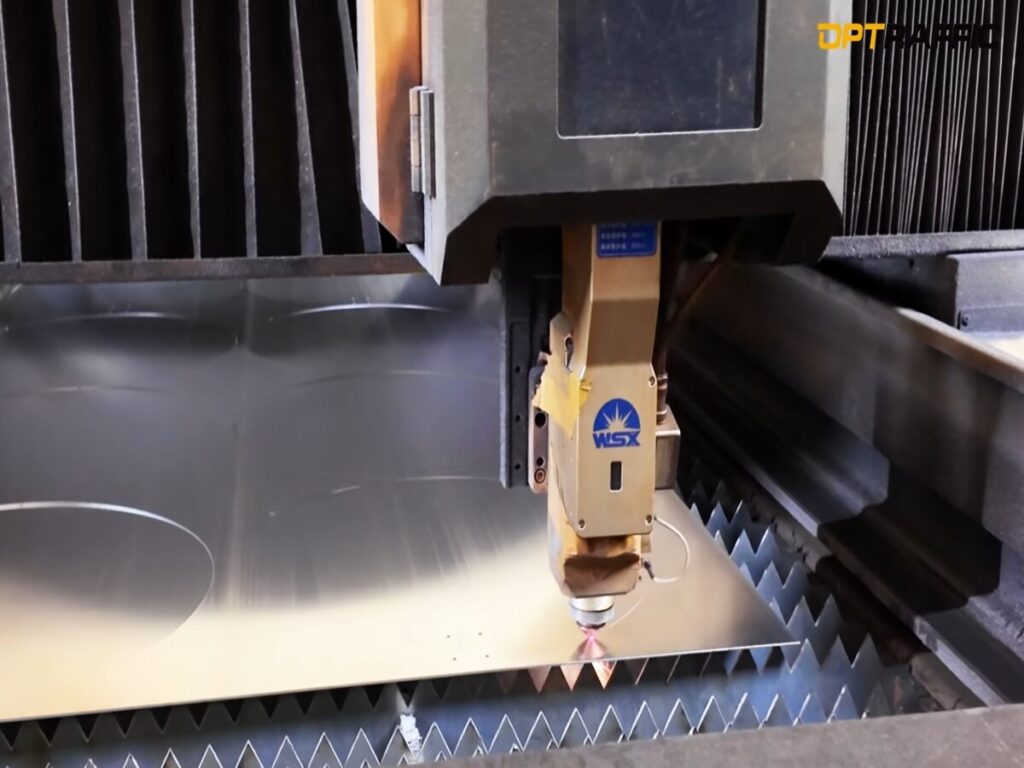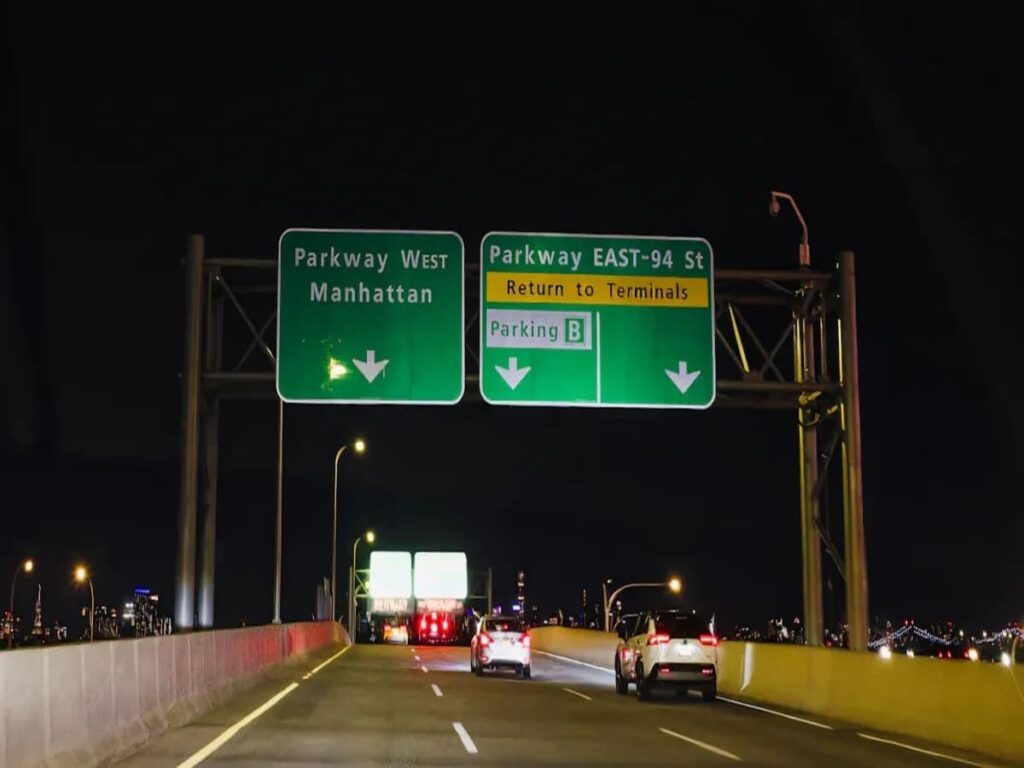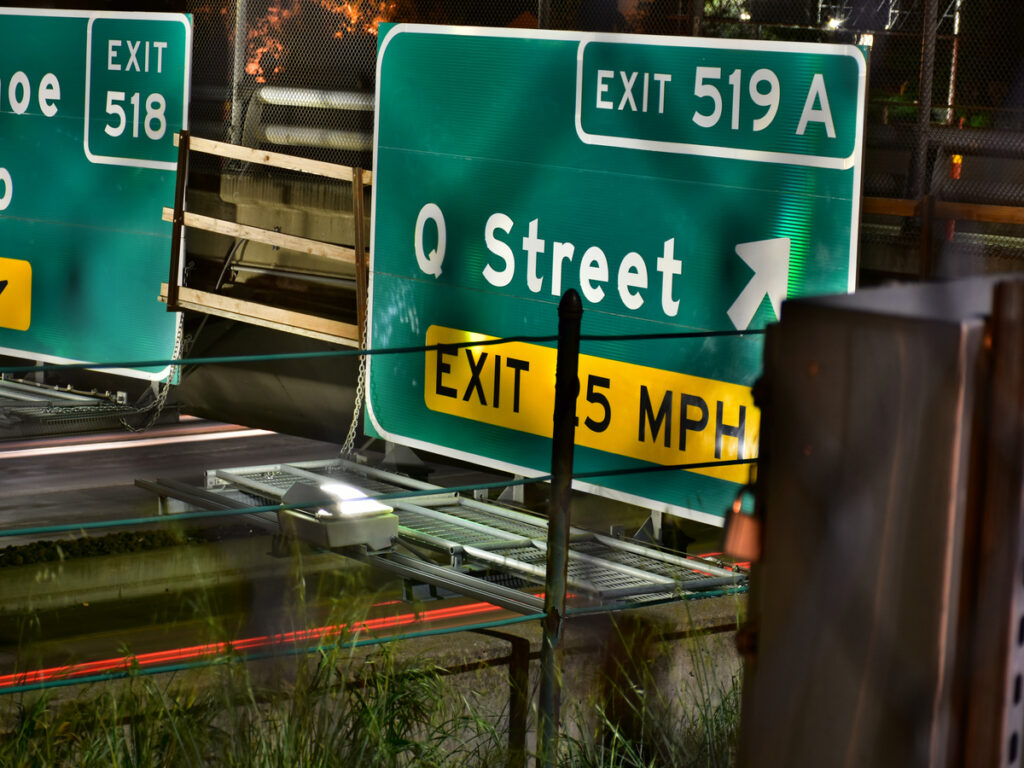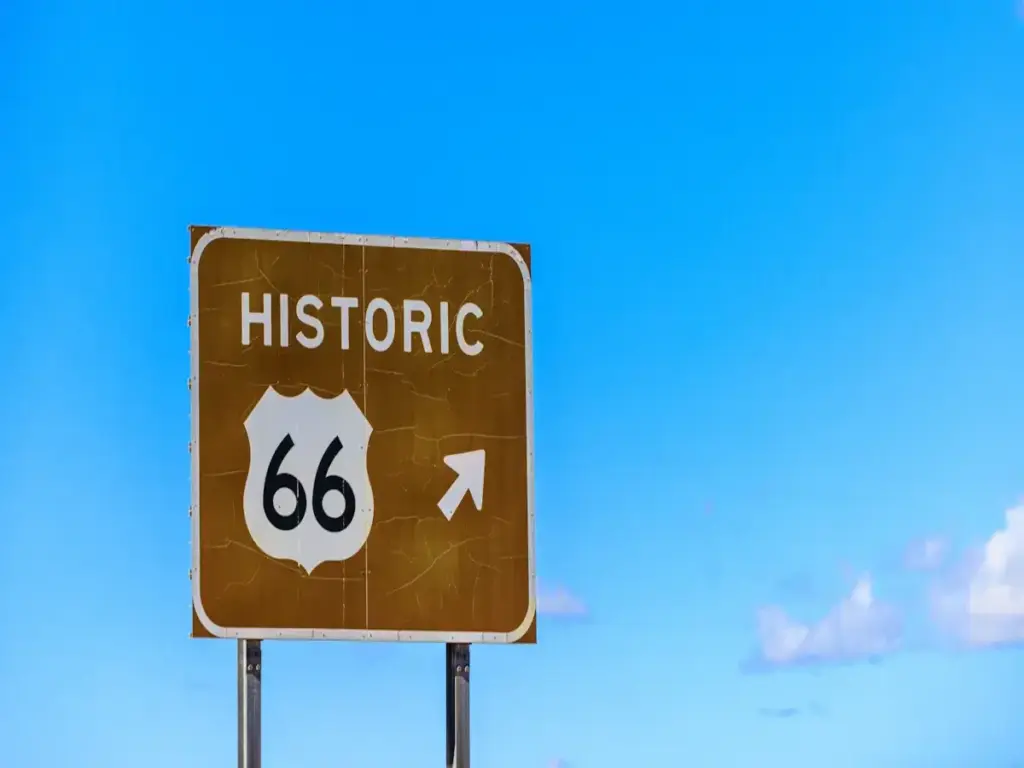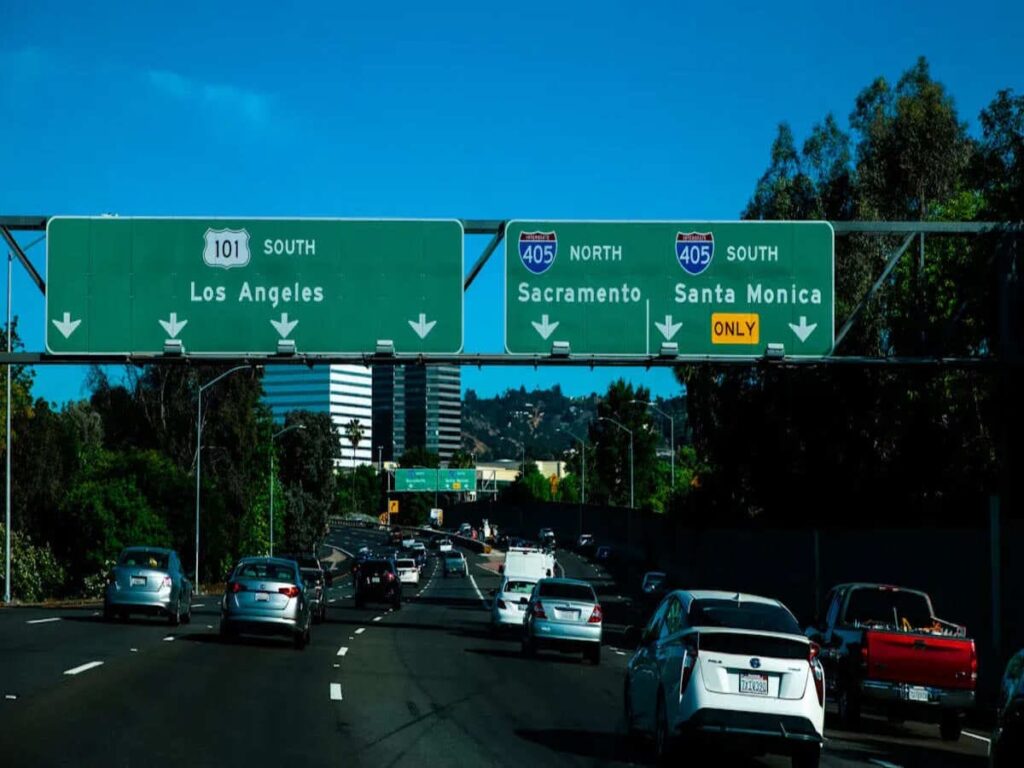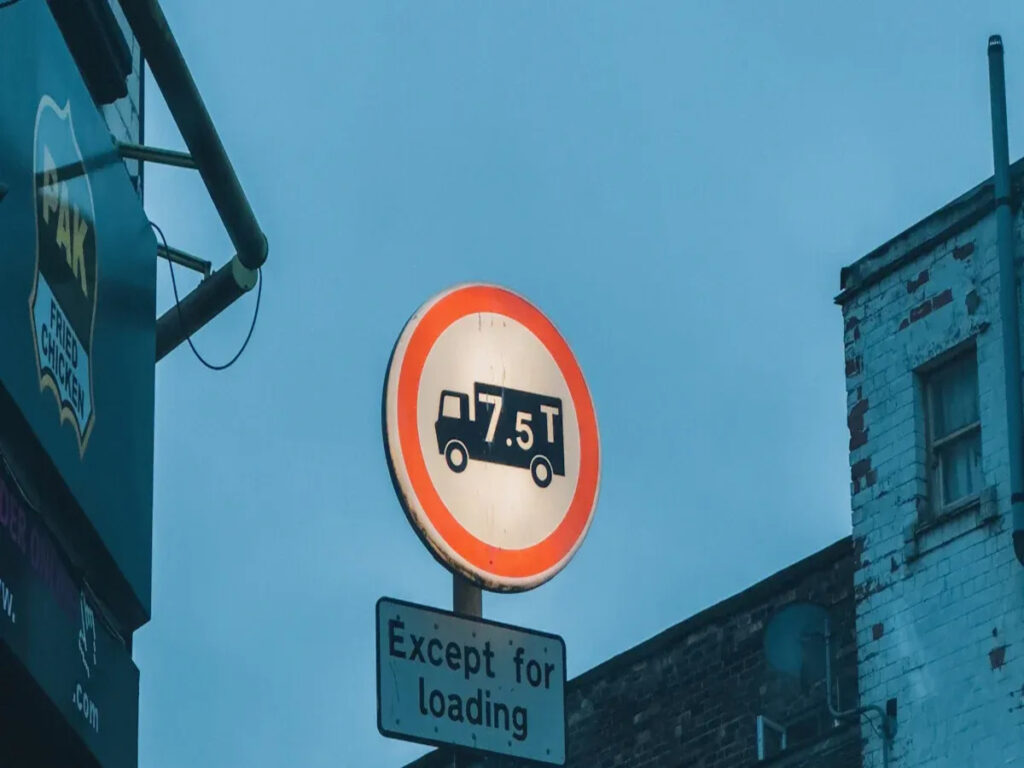
आपको यह जानना होगा कि यूके में ट्रैफिक साइन साइज़ के सख्त नियम हैं. ये नियम सड़कों को सुरक्षित रखने और संकेतों को देखने में आसान बनाने में मदद करते हैं. ट्रैफिक साइन्स मैनुअल दस मानक x-ऊंचाई देता है: 50 मिमी, 60 मिमी, 75 मिमी, 100 मिमी, 125 मिमी, 150 मिमी, 200 मिमी, 250 मिमी, 300 मिमी, और 400 मिमी. ये आकार अलग-अलग सड़कों पर फिट होते हैं और लोगों को संकेतों को बेहतर ढंग से देखने में मदद करते हैं. आपको प्रत्येक सड़क के लिए सही आकार चुनना होगा और चिंतनशील नियमों का पालन करना होगा. खरीदारों को यह जांचना चाहिए कि संकेतों पर सही परावर्तक फिनिश है और लगाए गए प्रत्येक संकेत के लिए यूके के नियमों का पालन करना चाहिए.
ओप्ट्राफिक पर, हम यूके-अनुरूप प्रदान करते हैं यातायात संकेत ऐसे समाधान जो आकार के लिए सभी राष्ट्रीय मानकों को पूरा करते हैं, दृश्यता, और परावर्तकता. चाहे आप सार्वजनिक सड़कों या निजी उपयोग के लिए साइनेज का प्रबंधन कर रहे हों, हमारी टीम आपको शुरुआत से ही इसे ठीक करने में मदद करती है.
चाबी छीनना
- यूके ट्रैफिक साइन का आकार सड़क के प्रकार के अनुरूप होना चाहिए. वे गति और संदेश कितनी देर तक है इस पर भी निर्भर करते हैं. इससे लोगों को लक्षण स्पष्ट रूप से देखने में मदद मिलती है और सभी सुरक्षित रहते हैं.
- हमेशा यातायात संकेत मैनुअल और स्थानीय नियमों का उपयोग करें. ये आपको सही साइन आकार और प्रतिबिंबित सामग्री चुनने में मदद करते हैं.
- तेज़ सड़कों और मोटरमार्गों पर बड़े संकेतों का प्रयोग करें. उन कस्बों में छोटे संकेतों का उपयोग करें जहां कारें धीमी गति से चलती हैं.
- पेड़ों या इमारतों जैसी चीज़ों की तलाश करें जो संकेतों को अवरुद्ध कर सकती हैं. सुनिश्चित करें कि संकेत पर्याप्त ऊँचे हों और प्रकाश को अच्छी तरह प्रतिबिंबित करें.
- प्रत्येक सड़क के लिए एक आकार का उपयोग करने जैसी गलतियाँ न करें. यह न भूलें कि संदेश कितने समय का है. इससे संकेत उपयोगी और कानूनी बने रहते हैं.
यूके ट्रैफिक साइन साइज़िंग जटिल क्यों है?
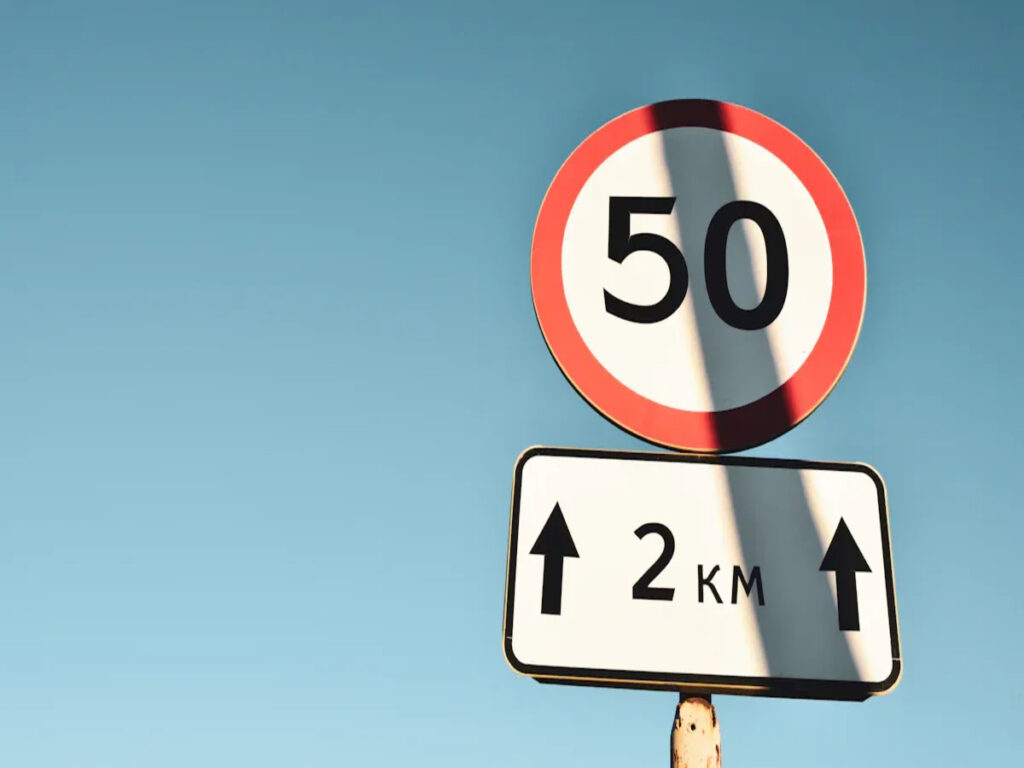
डिज़ाइन सिद्धांत बनाम निश्चित टेम्पलेट
आप सोच सकते हैं कि सभी ट्रैफ़िक संकेत निश्चित आकार का उपयोग करते हैं, लेकिन यूके प्रणाली अलग तरह से काम करती है. यूके एक-आकार-सभी-फिट टेम्पलेट्स के बजाय डिज़ाइन सिद्धांतों का उपयोग करता है. इसका मतलब है कि आपको प्रत्येक स्थिति को देखना होगा और निर्णय लेना होगा कि क्या सबसे अच्छा काम करता है. आप किसी दूसरी सड़क के चिन्ह की नकल करके उससे फिट होने की उम्मीद नहीं कर सकते.
बख्शीश: साइन ऑर्डर करने या स्थापित करने से पहले हमेशा डिज़ाइन नियमों की जांच करें. सही आकार केवल आकृति या प्रतीक से अधिक पर निर्भर करता है.
यहां डिज़ाइन सिद्धांतों के बारे में कुछ मुख्य बिंदु दिए गए हैं:
- आपको साइन का आकार सड़क के प्रकार और गति से मेल खाना चाहिए.
- साइन पर संदेश आपके आवश्यक आकार को बदल देता है.
- शब्दों या प्रतीकों की संख्या इस बात पर प्रभाव डालती है कि चिन्ह कितना बड़ा होना चाहिए.
- आपको यह सोचने की ज़रूरत है कि ड्राइवर कितनी दूर से संकेत देखेंगे.
एक साधारण कार पार्क चिह्न के लिए एक निश्चित टेम्पलेट काम कर सकता है, लेकिन व्यस्त मोटरवे के लिए नहीं. यूके प्रणाली आपको यह सुनिश्चित करने में मदद करती है कि प्रत्येक संकेत स्पष्ट और पढ़ने में आसान है.
आकार देने में प्रासंगिक कारक
जब आप चिह्न का आकार चुनते हैं तो आपको कई कारकों पर विचार करना होगा. सड़क और उसके आसपास का संदर्भ बहुत मायने रखता है. यहां कुछ चीजें हैं जिन्हें आपको अवश्य जांचना चाहिए:
- सड़क की गति: तेज़ सड़कों पर बड़े संकेतों की आवश्यकता होती है ताकि ड्राइवर उन्हें समय पर पढ़ सकें.
- सड़क का प्रकार: सड़कों, ग्रामीण सड़कें, और शहर की सड़कों की अलग-अलग ज़रूरतें हैं.
- दृश्यता: पेड़, इमारतों, या सड़क में मोड़ संकेतों को अवरुद्ध कर सकते हैं.
- दृश्य अव्यवस्था: एक साथ बहुत सारे चिह्न पास-पास होने से प्रत्येक को देखना कठिन हो जाता है.
- प्रकाश और मौसम: खराब रोशनी या कोहरे का मतलब है कि आपको बड़े या अधिक परावर्तक संकेतों की आवश्यकता है.
| कारक | चिन्ह के आकार पर प्रभाव |
|---|---|
| सड़क की गति | उच्च गति = अधिक |
| संदेश की लंबाई | अधिक शब्द = बड़ा |
| पर्यावरण | अधिक अव्यवस्था = अधिक |
आपको हमेशा पूरी तस्वीर देखनी चाहिए. साइन का सही आकार सभी को सुरक्षित रखता है और ड्राइवरों को अच्छे निर्णय लेने में मदद करता है.
यूके ट्रैफिक साइन विनियम और मानक
टीएसआरजीडी और ट्रैफिक साइन्स मैनुअल
किसी भी चिह्न का आकार चुनने से पहले आपको कानूनी ढांचे को समझना चाहिए. ब्रिटेन में, का मुख्य सेट यातायात संकेत नियम टीएसआरजीडी से आते हैं. यह दस्तावेज़ डिज़ाइन के नियम निर्धारित करता है, आकार, और सभी स्थायी यातायात संकेतों की नियुक्ति. टीएसआरजीडी यह सुनिश्चित करता है कि प्रत्येक संकेत स्पष्ट और पढ़ने में आसान हो, कोई फर्क नहीं पड़ता कि सड़क या मौसम. यातायात संकेत मैनुअल इन विनियमों के साथ-साथ काम करता है. यह आपको संकेतों को आकार देने और लगाने के बारे में व्यावहारिक सलाह देता है. मैनुअल आपको ट्रैफ़िक की गति के साथ साइन आकार का मिलान करने के लिए कहता है. उदाहरण के लिए, तेज़ सड़कों पर बड़े संकेतों की आवश्यकता होती है ताकि ड्राइवरों के पास उन्हें देखने और समझने के लिए पर्याप्त समय हो. मैनुअल आपको कार्यशील चित्रों की ओर भी इंगित करता है जो सटीक आकार और लेआउट दिखाते हैं.
अध्याय 7 और अध्याय 8 अवलोकन
आप पाएंगे कि यातायात संकेत मैनुअल में विभिन्न आवश्यकताओं के लिए अलग-अलग अध्याय हैं. अध्याय 7 स्थायी यातायात संकेतों पर ध्यान केंद्रित करता है. यह बताता है कि दीर्घकालिक उपयोग के लिए संकेतों को कैसे डिज़ाइन किया जाए, इसमें सही आकार और लेआउट का चयन कैसे करें शामिल है. अध्याय 8 अस्थायी चिह्नों को कवर करता है. इनका उपयोग सड़क निर्माण या अल्पकालिक परिवर्तनों के लिए किया जाता है. अस्थायी संकेतों के मानक अलग-अलग हैं क्योंकि आपको उन्हें तुरंत स्थानांतरित करने या बदलने की आवश्यकता हो सकती है. दोनों अध्याय आपको यह सुनिश्चित करने में मदद करते हैं कि आपके संकेत सभी नियमों का पालन करते हैं और सड़कों को सुरक्षित रखते हैं.
टिप्पणी: हमेशा जांचें कि कौन सा अध्याय आपके प्रोजेक्ट पर लागू होता है. स्थायी और अस्थायी संकेत अलग-अलग नियमों का पालन करते हैं.
महत्वपूर्ण पदों: एक्स-ऊंचाई, दंतकथा, बढ़ते
आपको यातायात संकेत नियमावली में कुछ विशेष शब्द दिखाई देंगे. यहाँ उनका मतलब है:
- एक्स-ऊंचाई: यह छोटे अक्षर 'x' की ऊंचाई है’ संकेत के पाठ में. यह सभी अक्षरों और संख्याओं का आकार निर्धारित करने में मदद करता है. बड़ी x-ऊंचाई का मतलब बेहतर सुपाठ्यता है, खासकर तेज सड़कों पर.
- दंतकथा: इसका मतलब चिन्ह पर दिखाए गए शब्द या संख्या से है. संदेश के आधार पर किंवदंती बदल सकती है, जैसे 'टैक्सी', 'एम्बुलेंस', या 'पुलिस वाहन'.
- बढ़ते: इस प्रकार आप साइन को कैसे और कहां लगाते हैं. आप सड़क या पैदल मार्ग के सामने कोई चिन्ह लगा सकते हैं, यह इस पर निर्भर करता है कि इसे किसे देखना है.
| अवधि | इसका क्या मतलब है |
|---|---|
| एक्स-ऊंचाई | अक्षर 'x' की ऊँचाई’ संकेत के पाठ में |
| दंतकथा | संकेत पर संदेश या शब्द |
| बढ़ते | जिस तरह और स्थान पर आप दृश्यता के लिए संकेत तय करते हैं |
आपको इन मानकों का पालन करने वाले स्थायी यातायात संकेतों का उपयोग करना चाहिए. यह आपको सभी ट्रैफ़िक संकेत नियमों को पूरा करने में मदद करता है और प्रत्येक सड़क उपयोगकर्ता के लिए अच्छी पठनीयता सुनिश्चित करता है.
यूके में मानक ट्रैफ़िक साइन आकार
विनियामक चिह्न आकार
आपको यह जानना होगा कि नियामक संकेतों के आकार के सख्त नियम होते हैं. ये संकेत ड्राइवरों को बताते हैं कि उन्हें क्या करना चाहिए या क्या नहीं करना चाहिए. उदाहरणों में गति सीमाएँ शामिल हैं, अंदर आना मन है, और पार्किंग प्रतिबंध. आप पाएंगे कि नियामक चिह्न मानक आकृतियों और रंगों का उपयोग करते हैं. अधिकांश में लाल घेरा या बॉर्डर होता है.
आपको नियामक संकेतों का आकार सड़क के प्रकार और गति से मेल खाना चाहिए. उदाहरण के लिए, मोटरवे पर गति सीमा चिन्ह शांत सड़क पर लगे गति सीमा चिन्ह से कहीं अधिक बड़ा होता है. नियामक संकेतों के लिए सबसे सामान्य आकार हैं 450 मिमी, 600 मिमी, 750 मिमी, और 900 व्यास में मिमी. आप देखेंगे 450 शहर के केंद्रों या कम गति वाली सड़कों पर मिमी संकेत. तेज़ या ग्रामीण सड़कों पर, आपको उपयोग करना चाहिए 600 मिमी या 750 एमएम संकेत. मोटरवे और दोहरे कैरिजवे की अक्सर आवश्यकता होती है 900 अधिकतम दृश्यता के लिए मिमी संकेत.
बख्शीश: नियामक संकेतों का ऑर्डर देने से पहले हमेशा सही आकार के लिए ट्रैफ़िक संकेत मैनुअल की जाँच करें. गलत आकार का उपयोग करने से खराब दृश्यता और कानूनी समस्याएं हो सकती हैं.
चेतावनी और दिशात्मक संकेत आकार
चेतावनी के संकेत ड्राइवरों को आगे के खतरों के लिए सचेत करते हैं, जैसे तीव्र मोड़ या पैदल यात्री क्रॉसिंग. दिशात्मक संकेत ड्राइवरों को गंतव्य तक मार्गदर्शन करते हैं. दोनों प्रकार के यातायात संकेत दूर से पढ़ने में आसान होने चाहिए. आपको सड़क की गति और संकेत पर जानकारी की मात्रा के आधार पर सही आकार चुनना होगा.
चेतावनी के संकेतों के लिए, मानक आकार हैं 600 मिमी, 750 मिमी, और 900 मिमी. आप प्रयोग करेंगे 600 कम गति वाले शहरी क्षेत्रों में मिमी संकेत. ग्रामीण सड़कों पर या जहां गति अधिक है, आपको चयन करना चाहिए 750 मिमी या 900 एमएम संकेत. दिशात्मक चिन्ह आकार में अधिक भिन्न होते हैं. चौड़ाई और ऊंचाई गंतव्यों की संख्या पर निर्भर करती है, संदेश की लंबाई, और सड़क का प्रकार. मोटरमार्गों पर, दिशा सूचक चिन्ह ख़त्म हो सकते हैं 3000 ड्राइवरों के लिए आवश्यक सभी जानकारी फिट करने के लिए मिमी चौड़ा.
आप देख सकते हैं कि 'पी' का आकार कैसा है’ नीचे दी गई तालिका में पार्किंग संकेतों पर प्रतीक गति और स्थान के साथ बदलता है:
| आरेख संख्या | चिह्नित खाड़ी | 85निजी कारों की वें प्रतिशत गति (मील प्रति घंटा) | 'पी' का आकार’ प्रतीक ऊँचाई (मिमी) |
|---|---|---|---|
| 667 & 668 | हाँ | तक 20 | 80 |
| 21 को 30 | 100 | ||
| 31 को 40 | 120 | ||
| ऊपर 40 | 160 | ||
| 667 & 668 | नहीं | तक 20 | 100 (80)* |
| 21 को 30 | 120 (100)* | ||
| 31 को 40 | 160 (120)* | ||
| ऊपर 40 | 200 (160)* | ||
| 667.1 & 668.1 | हाँ | तक 20 | 160 |
| 21 को 30 | 180 | ||
| 31 को 40 | 200 | ||
| ऊपर 40 | 200 | ||
| 667.1 & 668.1 | नहीं | तक 20 | 160 (120)* |
| 21 को 30 | 180 (160)* | ||
| 31 को 40 | 200 | ||
| ऊपर 40 | 200 | ||
| 667.2 & 668.2 | हाँ | तक 20 | 80 |
| 21 को 30 | 100 | ||
| 31 को 40 | 120 | ||
| ऊपर 40 | 160 | ||
| 667.2 & 668.2 | नहीं | तक 20 | 100 (80)* |
| 21 को 30 | 120 (100)* | ||
| 31 को 40 | 160 (120)* | ||
| ऊपर 40 | 200 (160)* |
*ब्रैकेटेड आकार वहां लागू होते हैं जहां विशेष सुविधा संबंधी विचार मौजूद होते हैं.
आप नीचे समूहीकृत बार चार्ट भी देख सकते हैं, जो दर्शाता है कि कैसे 'पी’ प्रतीक की ऊंचाई गति और संकेत प्रकार के साथ बढ़ती है:
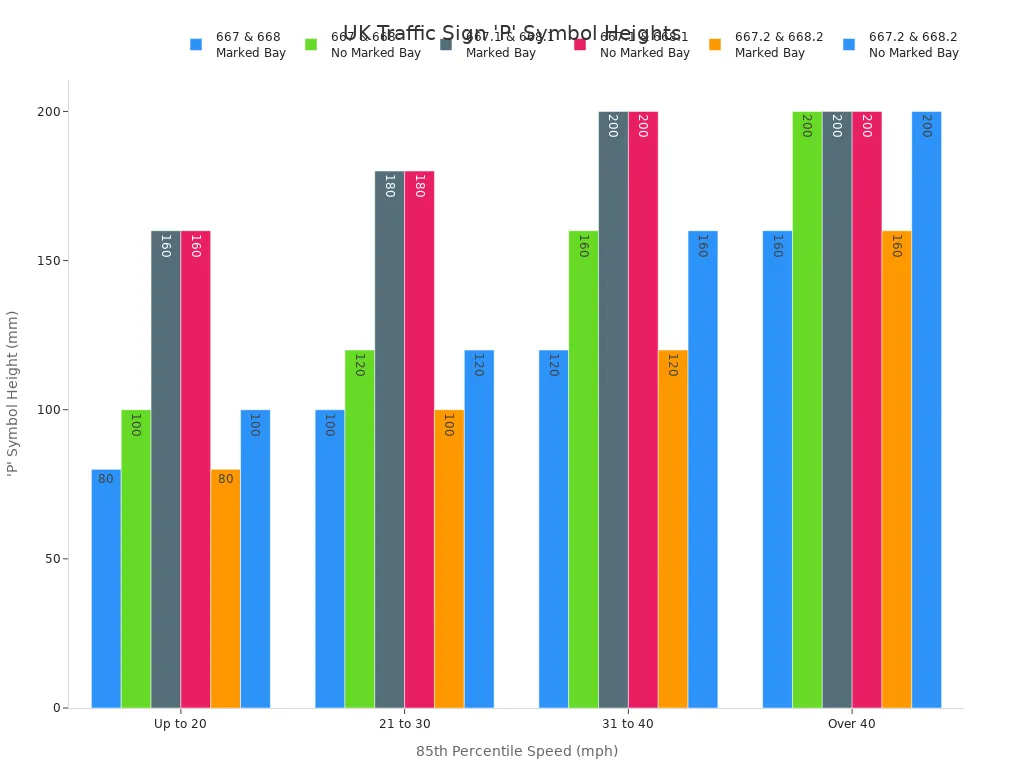
सामान्य आयाम और प्रारूप
आप देखेंगे कि ट्रैफ़िक साइन का आकार पसंदीदा आयामों के एक सेट का अनुसरण करता है. ये आपको प्रत्येक स्थिति के लिए सही संकेत चुनने में मदद करते हैं. सबसे आम पैनल आकार हैं 450 मिमी, 600 मिमी, 750 मिमी, 900 मिमी, और 1200 मिमी. आपको चिन्ह के प्रकार और सड़क के वातावरण के आधार पर सही आकार का चयन करना होगा.
विभिन्न प्रकार के यातायात संकेत विभिन्न प्रारूपों का उपयोग करते हैं. नियामक चिन्ह आमतौर पर गोलाकार या आयताकार होते हैं. चेतावनी संकेत लाल बॉर्डर के साथ त्रिकोणीय हैं. दिशात्मक चिन्ह आयताकार होते हैं और अक्सर वे लम्बे होने की तुलना में अधिक चौड़े होते हैं.
आपको सड़क चिह्नों के बारे में भी पता होना चाहिए, जो ड्राइवरों को मार्गदर्शन देने के लिए संकेतों के साथ काम करते हैं. यहाँ कुछ सामान्य प्रकार हैं:
- सिंगल कैरिजवे सड़कों के लिए केंद्र रेखाएँ आरेख का उपयोग करती हैं 1008 तक की गति के लिए 40 मील प्रति घंटे और आरेख 1008.1 उच्च गति के लिए.
- आरेख 1040 दोतरफा सड़कों पर यातायात प्रवाह को अलग करता है, विशेषकर खतरों के निकट.
- आरेख 1040.2 मोड़ों या पहाड़ी शिखरों पर अतिरिक्त अलगाव देता है और इसके पहले एक पतला अंकन की आवश्यकता होती है.
- आरेख 1040.3 लेन कटौती या बंद क्षेत्रों को चिह्नित करता है, ए का उपयोग करना 200 मिमी चौड़े किनारे का अंकन (150 कुछ सड़कों पर मिमी).
- आरेख 1040.4 सड़क के किनारे पर उन क्षेत्रों को चिह्नित करता है जिनसे ड्राइवरों को तब तक बचना चाहिए जब तक कि सुरक्षित न हो, अक्सर यातायात शांत करने वाले क्षेत्रों में.
- किनारे की रेखाएँ उभरी हुई पसली प्रोफाइल का उपयोग करती हैं (आरेख 1012.2 मोटरमार्गों पर, 1012.3 अन्य सड़कों पर) और इन्हें लाल या एम्बर परावर्तक स्टड के साथ जोड़ा गया है.
टिप्पणी: ट्रैफ़िक चिह्नों के आकार और प्रारूपों के अपडेट के लिए हमेशा नवीनतम ट्रैफ़िक चिह्न मैनुअल की जाँच करें. यह सुनिश्चित करता है कि आप अनुपालन में रहें और सड़क उपयोगकर्ताओं को सुरक्षित रखें.
यातायात चिन्ह के आकार को प्रभावित करने वाले कारक
सड़क का प्रकार और गति
आपको प्रत्येक सड़क के लिए सही साइन आकार चुनना होगा. मोटरवे जैसी तेज़ सड़कों को धीमी शहर की सड़कों की तुलना में बड़े संकेतों की आवश्यकता होती है. तेज़ सड़कों पर चालकों के पास संकेतों को पढ़ने के लिए कम समय होता है. बड़े संकेत उन्हें संदेश को शीघ्रता से देखने और समझने में मदद करते हैं. नीचे दी गई तालिका दिखाती है कि विभिन्न सड़कों और गति के लिए साइन का आकार कैसे बदलता है:
| सड़क प्रकार | गति सीमा (मील प्रति घंटा) | टर्मिनल साइन आकार (मिमी) | पुनरावर्तक चिह्न आकार (मिमी) |
|---|---|---|---|
| एकल गाड़ी | 40 और नीचे | 600 | 300 |
| एकल गाड़ी | 50 | 600 | 300 |
| एकल गाड़ी | राष्ट्रीय सीमा | 600 | 450 |
| द्वय वाहन मार्ग | 60 | 600 | 450 |
| द्वय वाहन मार्ग | राष्ट्रीय सीमा | 900 | 450 |
| मोटरवे | 60 और ऊपर दिए गए | तक 1200 | एन/ए |
बख्शीश: तेज़ सड़कों पर बड़े संकेत ड्राइवरों को उन्हें जल्दी पहचानने में मदद करते हैं. इससे सड़कें सुरक्षित हो जाती हैं और संकेतों को पढ़ना आसान हो जाता है.
इसे आप नीचे दिए गए चार्ट में भी देख सकते हैं:
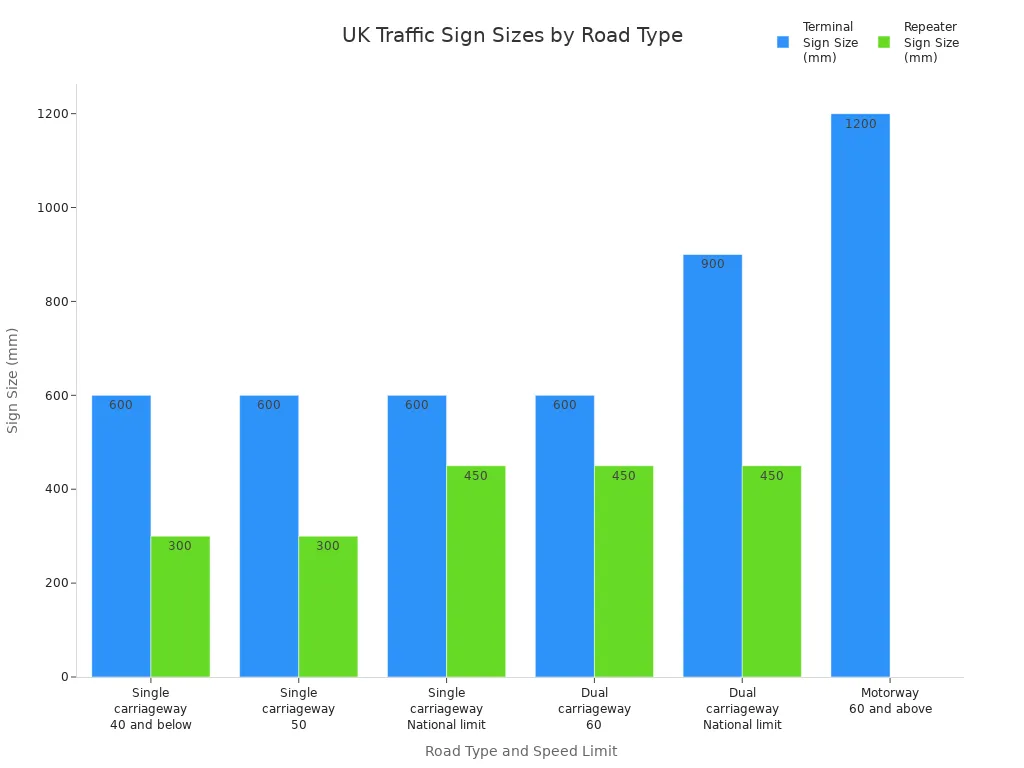
संदेश की लंबाई और दृश्य अव्यवस्था
किसी चिन्ह पर शब्दों या प्रतीकों की संख्या से उसका आकार बदल जाता है. बहुत अधिक शब्दों के कारण संकेतों को पढ़ना कठिन हो जाता है. लंबे संदेश ड्राइवरों का ध्यान भटका सकते हैं और संकेत कम स्पष्ट कर सकते हैं. छोटा, सरल संदेश सभी के लिए सर्वोत्तम हैं. लोगों को संकेतों को बेहतर ढंग से देखने में मदद करने के लिए नियम फ़ॉन्ट आकार और लाइन की लंबाई पर सीमा निर्धारित करते हैं. यदि एक साथ बहुत सारे चिह्न पास-पास हों, इसे दृश्य अव्यवस्था कहा जाता है. इससे ड्राइवरों के लिए जल्दी से अपनी ज़रूरत की चीज़ ढूंढ़ना कठिन हो जाता है.
- छोटे संदेश पढ़ने में आसान होते हैं और ध्यान भटकाने वाले कम होते हैं.
- कम शब्द ड्राइवरों को गति से संकेत पढ़ने में मदद करते हैं.
- संदेशों को समूहीकृत करने से ड्राइवरों को संकेतों को तेजी से समझने में मदद मिलती है.
पर्यावरण और दृश्यता संबंधी विचार
साइन साइज़ चुनते समय आपको यह अवश्य देखना चाहिए कि सड़क के आसपास क्या है. पेड़, इमारतों, या मोड़ संकेतों को दृश्य से छिपा सकते हैं. कोहरा या बारिश जैसे खराब मौसम के कारण संकेतों को देखना कठिन हो जाता है. साइन से सड़क के किनारे तक की दूरी बदल जाती है कि ड्राइवर इसे कितनी जल्दी देख सकते हैं. संकेत इतने बड़े होने चाहिए कि ड्राइवर उनके बहुत करीब आने से पहले ही उन्हें पढ़ सकें. चमकीले रंग और सरल डिज़ाइन संकेतों को हर मौसम में अलग दिखने में मदद करते हैं. हमेशा इस बारे में सोचें कि संकेतों को पढ़ना कितना आसान है, वे कितने सरल हैं, और उनकी लागत कितनी है.
याद करना: स्पष्ट संकेत और अच्छी दृश्यता सभी को सुरक्षित रखने में मदद करती है.
क्रेताओं एवं ठेकेदारों के लिए चयन प्रक्रिया
चरण-दर-चरण मार्गदर्शिका
सही ट्रैफ़िक चिह्न आकार चुनने के लिए आपको एक स्पष्ट प्रक्रिया की आवश्यकता है. इससे आपको नियमों का पालन करने और सड़कों को सुरक्षित रखने में मदद मिलती है. यह सुनिश्चित करने के लिए कि आप हर बार सही आकार चुनें, इन चरणों का उपयोग करें:
- सड़क के प्रकार और गति की जाँच करें
उस सड़क को देखकर शुरुआत करें जहां आप चिन्ह लगाएंगे. क्या यह एक मोटरमार्ग है, एक ग्रामीण सड़क, या एक शहरी सड़क? गति सीमा का पता लगाएं. तेज़ गति के लिए बड़े संकेतों की आवश्यकता होती है ताकि ड्राइवर उन्हें समय पर देख सकें. - चिह्न श्रेणी तय करें
यदि आपको नियामक की आवश्यकता है तो कार्य करें, चेतावनी, या दिशा सूचक. प्रत्येक प्रकार के अपने आकार के नियम होते हैं. - संदेश की लंबाई मापें
शब्दों और प्रतीकों की संख्या गिनें. लंबे संदेशों को स्पष्ट रूप से पढ़ने के लिए बड़े संकेतों की आवश्यकता होती है. - यातायात चिह्न मैनुअल तालिकाओं का उपयोग करें
ट्रैफ़िक संकेत मैनुअल में सही आकार देखें. उदाहरण के लिए, मेज़ 7-4 आपको पार्किंग संकेतों के लिए आकार ढूंढने में मदद करता है. मेज़ 9-1 आपातकालीन ले-बाय संकेतों के लिए आकार देता है. परिशिष्ट ए आपको विभिन्न गतियों के लिए सही चेतावनी संकेत आकार दिखाता है. ये तालिकाएँ आपको सड़क और संदेश के संकेत का मिलान करने में मदद करती हैं. - स्थानीय प्राधिकरण आवश्यकताओं की जाँच करें
कुछ परिषदों के पास अतिरिक्त नियम हैं. साइन ऑर्डर करने या स्थापित करने से पहले हमेशा स्थानीय प्राधिकारी से जांच लें. - दृश्यता और बाधाओं पर विचार करें
पेड़ों की तलाश करो, झुकता, या ऐसी इमारतें जो संकेत को अवरुद्ध कर सकती हैं. सुनिश्चित करें कि चिन्ह अलग दिखने के लिए पर्याप्त बड़ा हो. - परावर्तन और माउंटिंग की पुष्टि करें
सुनिश्चित करें कि चिन्ह सही परावर्तक सामग्री का उपयोग करता है. सर्वोत्तम दृश्यता के लिए माउंटिंग की ऊँचाई और स्थिति की जाँच करें.
बख्शीश: यातायात चिह्न मैनुअल की एक प्रति हमेशा अपने पास रखें. तालिकाएँ और परिशिष्ट आपको अधिकांश चिह्न आकार के प्रश्नों के त्वरित उत्तर देते हैं.
शहरी, ग्रामीण, और मोटरवे अंतर
आपको अलग-अलग वातावरणों के लिए अपने साइन आकार विकल्पों को समायोजित करना होगा. प्रत्येक सेटिंग की अपनी ज़रूरतें होती हैं:
- शहरी क्षेत्र
कस्बों और शहरों की सड़कों पर अक्सर गति सीमा कम होती है. आप छोटे चिह्नों का उपयोग कर सकते हैं, जैसे कि 450 मिमी या 600 मिमी. अन्य संकेतों से दृश्य अव्यवस्था पर नज़र रखें, दुकानें, या पेड़. संकेतों को इतनी ऊंचाई पर लगाएं ताकि लोग और खड़ी कारें उन्हें रोक न सकें. - ग्रामीण सड़कें
देश की सड़कों पर आमतौर पर तेज़ गति होती है और स्ट्रीट लाइटें कम होती हैं. बड़े चिह्न चुनें, पसंद 750 मिमी या 900 मिमी. सुनिश्चित करें कि हेजेज या मोड़ संकेत को न छिपाएँ. रात के समय बेहतर दृश्यता के लिए परावर्तक सामग्री का उपयोग करें. - सड़कों
मोटरमार्गों को सबसे बड़े संकेतों की आवश्यकता है. ड्राइवर तेज़ गति से यात्रा करते हैं और उन्हें दूर से संकेतों को पढ़ने की आवश्यकता होती है. विस्तृत दिशासूचक चिन्हों का प्रयोग करें, कभी-कभी खत्म 3000 मिमी, और सुनिश्चित करें कि स्पष्ट रूप से पढ़ने के लिए x-ऊंचाई पर्याप्त बड़ी हो. माउंट संकेत कम से कम 2100 सर्वोत्तम परिणामों के लिए कर्ब से ऊपर मिमी.
| पर्यावरण | विशिष्ट चिह्न आकार (मिमी) | मुख्य विचार |
|---|---|---|
| शहरी | 450-600 | अव्यवस्था, बढ़ती हुई ऊँचाई |
| ग्रामीण | 750–900 | दृश्यता, हेजेज, रफ़्तार |
| मोटरवे | 1200+ (चौड़ाई भिन्न होती है) | दूरी, रफ़्तार, बढ़ती हुई ऊँचाई |
याद करना: सही आकार सड़क और उसका उपयोग करने वाले लोगों दोनों पर निर्भर करता है.
आकार निर्धारण की सामान्य गलतियाँ
साइन साइज़ चुनते समय कई लोग गलतियाँ करते हैं. आप ऊपर दिए गए चरणों का पालन करके इन त्रुटियों से बच सकते हैं. यहां कुछ सामान्य समस्याएं हैं:
- हर जगह एक ही आकार का उपयोग करना
कुछ खरीदार सभी सड़कों के लिए एक आकार चुनते हैं. यह काम नहीं करता. एक संकेत जो शहर की सड़क पर फिट बैठता है वह तेज़ ग्रामीण सड़क के लिए बहुत छोटा हो सकता है. - संदेश की लंबाई को अनदेखा करना
यदि आप किसी छोटे चिन्ह में बहुत अधिक शब्द जोड़ते हैं, ड्राइवर इसे समय पर नहीं पढ़ पाते. साइन का आकार हमेशा संदेश से मेल खाए. - स्थानीय नियमों को भूल जाना
ठेकेदार कभी-कभी स्थानीय प्राधिकारी आवश्यकताओं की जाँच करना छोड़ देते हैं. परिषदें उन संकेतों को अस्वीकार कर सकती हैं जो उनके मानकों को पूरा नहीं करते हैं. - मैनुअल की जांच नहीं की जा रही है
यातायात चिह्न नियमावली को छोड़ देने से गलतियाँ होती हैं. तालिकाएँ पसंद हैं 7-4 और 9-1, और परिशिष्ट ए, आपको प्रत्येक स्थिति के लिए सही आकार दें. - संकेतों को बहुत नीचे या बाधाओं के पीछे लगाना
यदि आप बहुत नीचे या किसी पेड़ के पीछे कोई चिन्ह लगाते हैं, ड्राइवर इसे मिस करेंगे. हमेशा स्पष्ट दृश्य रेखाओं की जाँच करें.
🚫समय बचाने के लिए इन गलतियों से बचें, धन, और सड़क पर सभी को सुरक्षित रखें.
अनुपालन और कानूनी आवश्यकताएँ
अनिवार्य मानक
यूके में यातायात संकेत स्थापित करते समय आपको सख्त मानकों का पालन करना होगा. कानून प्रत्येक प्रकार के चिन्ह के लिए सटीक माप और नियम निर्धारित करता है. ये नियम सड़कों को सुरक्षित रखने में मदद करते हैं और सुनिश्चित करते हैं कि प्रत्येक ड्राइवर संदेश को समझे.
- गिव वे मार्किंग दो टूटी हुई रेखाओं का उपयोग करती है. प्रत्येक पंक्ति मापती है 600 मिमी के साथ 300 मिमी अंतराल और है 200 मिमी चौड़ा. आपको ये पंक्तियाँ अवश्य लगानी चाहिए 300 एक छोटी सड़क के मुहाने पर मिमी अलग.
- त्रिकोणीय गिव वे मार्किंग बीच में बैठती है 2100 एमएम और 2750 मुख्य गिव वे लाइन से मिमी. आप इस दूरी को तक बढ़ा सकते हैं 15 यदि आपको बेहतर दृश्यता चाहिए तो मीटर.
- व्यस्त चौराहे पर सीधा रास्ता देने का संकेत आवश्यक है, मुख्य सड़कों के साथ ग्रामीण जंक्शन, और प्राथमिक मार्गों के साथ शहरी जंक्शन. यदि छोटी सड़क आवासीय या स्थानीय है तो आपको इस चिन्ह की आवश्यकता नहीं है.
- इन चिह्नों के लिए साइकिल ट्रैक के अलग-अलग आयाम होते हैं.
- कानून मिलीमीटर में सटीक आकार देता है और आपको बताता है कि वैकल्पिक आकार या अतिरिक्त संकेतों का उपयोग कब करना है.
किसी भी साइन को ऑर्डर करने या स्थापित करने से पहले आपको नियमों की जांच करनी चाहिए. यह सुनिश्चित करता है कि आप सभी कानूनी आवश्यकताओं को पूरा करें और अपनी परियोजना को राष्ट्रीय मानकों के अनुरूप रखें.
गैर-अनुपालन की स्वीकृति और परिणाम
कोई भी स्थायी यातायात चिन्ह लगाने से पहले आपको स्थानीय प्राधिकारी से अनुमोदन की आवश्यकता होती है. परिषद यह सुनिश्चित करने के लिए आपकी योजनाओं की जाँच करती है कि आप सभी नियमों का पालन कर रहे हैं. यदि आप आवश्यकताओं को पूरा नहीं करते हैं, परिषद आपके हस्ताक्षर को अस्वीकार कर सकती है या आपसे इसे बदलने के लिए कह सकती है.
अनुपालन न करने से गंभीर समस्याएँ पैदा हो सकती हैं. यदि आप गलत आकार का उपयोग करते हैं या गलत तरीके से कोई चिन्ह लगाते हैं, ड्राइवर इसे समय पर नहीं देख सकते हैं. इससे दुर्घटनाएं या भ्रम हो सकता है. परिषद आपके खर्च पर गैर-अनुपालक संकेतों को हटा सकती है. कुछ मामलों में, यदि कोई चिन्ह मानकों के अनुरूप नहीं है और नुकसान पहुंचाता है तो आपको कानूनी कार्रवाई का सामना करना पड़ सकता है.
⚠️ हमेशा अपनी योजनाओं की दोबारा जांच करें और कोई भी चिह्न स्थापित करने से पहले अनुमोदन प्राप्त करें. अच्छा अनुपालन आपकी सुरक्षा करता है, आपका प्रोजेक्ट, और प्रत्येक सड़क उपयोगकर्ता.
यातायात संकेतों के लिए चिंतनशील शीटिंग
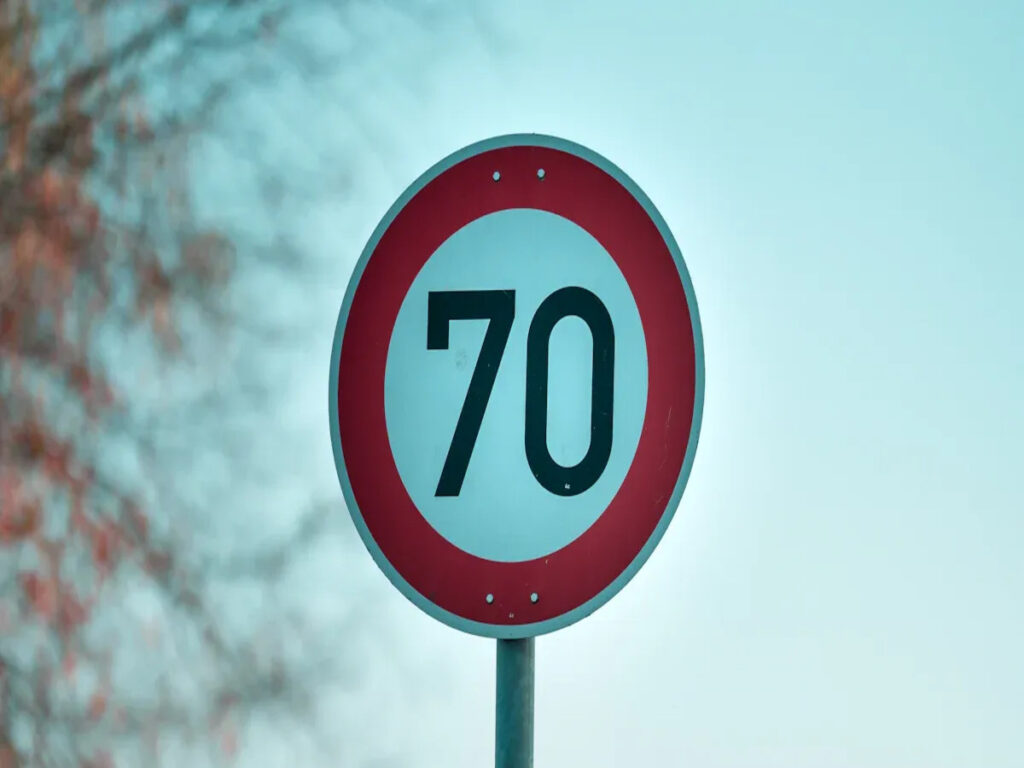
परावर्तन के लिए यूके मानक
आपको ट्रैफ़िक संकेतों के लिए परावर्तक शीटिंग का उपयोग करना चाहिए जो यूके के सख्त मानकों को पूरा करता हो. ये नियम ड्राइवरों को रात में और खराब मौसम में संकेत देखने में मदद करते हैं. यूके में यातायात संकेतों के लिए परावर्तक शीटिंग के लिए अलग-अलग ग्रेड हैं, जैसे कक्षा RA1 और कक्षा RA2. प्रत्येक ग्रेड की चमक का अपना स्तर होता है और यह कितने समय तक चलती है. यातायात संकेतों के लिए चिंतनशील शीटिंग में यह दिखाने के लिए सीई चिह्न होना चाहिए कि यह सुरक्षित है.
ट्रैफ़िक संकेतों के लिए परावर्तक शीटिंग कार हेडलाइट बीम को ड्राइवरों तक वापस भेजकर काम करती है. इससे अंधेरे में या बारिश होने पर संकेतों को पहचानना आसान हो जाता है. आपको प्रत्येक सड़क प्रकार के लिए अनुमत न्यूनतम परावर्तनशीलता की जांच करने की आवश्यकता है. मोटरमार्गों और तेज़ सड़कों को यातायात संकेतों के लिए उच्च श्रेणी की परावर्तक शीटिंग की आवश्यकता होती है. धीमी सड़कें निम्न ग्रेड का उपयोग कर सकती हैं, लेकिन आपको अभी भी नियमों का पालन करना होगा.
बख्शीश: ट्रैफ़िक संकेतों के लिए परावर्तक शीटिंग खरीदने से पहले हमेशा नवीनतम यूके सलाह देखें. सही ग्रेड चुनने से सड़कें सुरक्षित रहती हैं और आपको काउंसिल की जांच पास करने में मदद मिलती है.
ट्रैफिक साइन रिफ्लेक्टिव शीटिंग के प्रकार
आप विभिन्न प्रकार के ट्रैफ़िक साइन रिफ्लेक्टिव शीटिंग में से चुन सकते हैं. प्रत्येक प्रकार में कुछ आवश्यकताओं के लिए विशेष विशेषताएं होती हैं.
- फ्लोरोसेंट परावर्तक शीट दिन में और अंधेरा होने पर संकेतों को उज्जवल बनाती है. यह अधिक प्रकाश लेने और वापस लौटाने के लिए विशेष रंगों का उपयोग करता है. इससे कोहरे में संकेतों को अलग दिखने में मदद मिलती है, बारिश, और बर्फ. इसके बारे में रहता है 10 को 12 यदि आप इसकी देखभाल करते हैं तो वर्षों. आप इसे अक्सर स्कूल क्षेत्रों में देखते हैं, कार्य क्षेत्र, और तीखे मोड़ जहां संकेतों को देखना आसान होना चाहिए. अध्ययनों से पता चलता है कि यातायात संकेतों के लिए यह परावर्तक शीटिंग दुर्घटनाओं को कम कर सकती है और सड़कों को सुरक्षित बना सकती है.
- इंजीनियर ग्रेड रिफ्लेक्टिव शीटिंग में प्लास्टिक फिल्म में छोटे कांच के मोतियों का उपयोग किया जाता है. यह प्रकार ड्राइवरों को रात में या खराब मौसम में संकेत देखने में मदद करता है. यह महंगा नहीं है और स्थानीय सड़कों या कम महत्वपूर्ण संकेतों के लिए अच्छा काम करता है. चादर फीकी नहीं पड़ती, दरार, या आसानी से छीलें, और रहता है 7 को 10 साल. आप इसे कई साइन आकृतियों पर उपयोग कर सकते हैं, और इसकी देखभाल करना आसान है. यह उच्च ग्रेड जितना उज्ज्वल नहीं है, लेकिन यह कई उपयोगों के लिए एक अच्छा विकल्प है.
आपको हमेशा यातायात संकेतों के लिए सड़क और क्षेत्र के लिए परावर्तक शीटिंग के प्रकारों का मिलान करना चाहिए. कुछ प्रकार व्यस्त सड़कों के लिए बेहतर हैं, जबकि अन्य शांत स्थानों में फिट बैठते हैं. सही ट्रैफिक साइन रिफ्लेक्टिव शीटिंग चुनने से आपको यूके के नियमों का पालन करने में मदद मिलती है और सभी सड़क उपयोगकर्ताओं को सुरक्षित रखा जा सकता है.
खरीदारी और स्थापना युक्तियाँ
आपूर्तिकर्ताओं के साथ काम करना
आपको ऐसे आपूर्तिकर्ताओं को चुनना चाहिए जो यूके ट्रैफिक साइन नियमों को जानते हों. ऐसी कंपनियाँ चुनें जो TSRGD और ब्रिटिश मानकों का पालन करती हों. इससे आपके संकेतों को कानून का पालन करने और लंबे समय तक टिकने में मदद मिलती है. आपूर्तिकर्ताओं के साथ अच्छा काम करने के कुछ तरीके यहां दिए गए हैं: 1. पूछें कि क्या वे ब्रैकेट के लिए गैल्वेनाइज्ड स्टील या एल्यूमीनियम जैसी मजबूत सामग्री का उपयोग करते हैं. 2. जांचें कि क्या वे समान आकारों में संकेत प्रदान करते हैं 750 मिमी, 900 मिमी, 1200 मिमी, और 1500 मिमी. तेज़ सड़कों पर बड़े संकेत देखना आसान होता है. 3. सुनिश्चित करें कि वे जानते हैं कि सही ऊंचाई और कोण पर संकेत कैसे लगाए जाएं. यह सभी को सुरक्षित रखता है. 4. सबूत मांगें कि उनके संकेत डीएफटी मार्गदर्शन को पूरा करते हैं. 5. क्षति के लिए हर छह महीने में अपने संकेतों की जांच करने की योजना बनाएं. यह आपके संकेतों को सुरक्षित और वैध रखता है.
बख्शीश: अच्छे आपूर्तिकर्ता सफ़ाई में आपकी सहायता कर सकते हैं, प्रकाश, और संकेत कहां लगाना है. इससे वे गलतियाँ रुक जाती हैं जिनमें बाद में पैसा खर्च होता है.
मानक बनाम कस्टम आकार
अधिकांश यूके यातायात संकेत मानक आकार में आते हैं. ये आकार अधिकांश सड़कों के लिए काम करते हैं और आपको नियमों का पालन करने में मदद करते हैं. मानक आकार बाद में संकेतों को ठीक करना या बदलना भी आसान बनाते हैं. कभी-कभी आपको किसी विशेष स्थान या संदेश के लिए कस्टम आकार की आवश्यकता होती है. कस्टम चिह्नों का ऑर्डर देने से पहले हमेशा अपने स्थानीय प्राधिकारी से पूछें. उनके पास अतिरिक्त नियम हो सकते हैं या पहले हाँ कहने की आवश्यकता हो सकती है.
| आकार प्रकार | कब उपयोग करें | फ़ायदे |
|---|---|---|
| मानक | अधिकांश सड़कें और सामान्य संदेश | ऑर्डर करना आसान है, शीघ्र अनुमोदन |
| रिवाज़ | अद्वितीय साइटें या विशेष संदेश | विशेष जरूरतों को पूरा करता है, लेकिन पहले नियम जांच लें |
इंस्टालेशन और माउंटिंग की सर्वोत्तम प्रथाएँ
आपको संकेत अवश्य लगाने चाहिए ताकि ड्राइवर उन्हें अच्छी तरह से देख सकें. संकेतों को ऐसी ऊंचाई पर लगाएं जो अधिकांश ड्राइवरों की आंखों से मेल खाती हो. साइन को थोड़ा सा सड़क के केंद्र की ओर मोड़ें. इससे सभी लेन के ड्राइवरों को इसे देखने में मदद मिलती है. ऐसी कोई भी चीज़ हटा दें जो संकेत को अवरुद्ध करती हो, जैसे पेड़ की शाखाएँ या खड़ी कारें. सड़क के लिए सही परावर्तक सामग्री का उपयोग करें - शहरी और ग्रामीण सड़कों के लिए R1 और R2, तेज़ सड़कों के लिए R3B. तेजी से सड़कों पर, अतिरिक्त रोशनी या एलईडी बीकन जोड़ें. इससे ड्राइवरों को रात में या खराब मौसम में संकेत देखने में मदद मिलती है.
- संकेतों को अक्सर साफ करें ताकि वे चमकदार बने रहें और पढ़ने में आसान हो.
- सुनिश्चित करें कि सभी हिस्से कड़े हों ताकि हवा और बारिश उन्हें हिला न सकें.
- अध्याय का पालन करने के लिए अपनी टीम को प्रशिक्षित करें 8 और सुरक्षित कार्य के लिए एनएचएसएस नियम.
याद करना: सावधानीपूर्वक कार्य और नियमित जांच आपके संकेतों को सुरक्षित रखती है, कानूनी, और हर किसी के लिए देखना आसान है.
यूके ट्रैफ़िक साइन साइज़ के बारे में जानने से आपको नियमों का पालन करने में मदद मिलती है और लोग सुरक्षित रहते हैं. आपको हमेशा यातायात संकेत नियमावली को देखना चाहिए और संकेत खरीदने या लगाने से पहले अपनी स्थानीय परिषद से पूछना चाहिए.
- केवल यूकेसीए-चिह्नित संकेतों का उपयोग करें जो प्रतिबिंब के लिए परीक्षण पास करते हैं, ताकत, और पर्यावरण के लिए अच्छा है.
- आप जिस सड़क पर काम करते हैं उसके लिए सही परावर्तक ग्रेड चुनें.
- प्रमाणित परावर्तक उत्पाद बेचने वाले विश्वसनीय आपूर्तिकर्ताओं से खरीदें.
- स्पष्ट रिकॉर्ड रखें और यह सुनिश्चित करने के लिए कि वे अच्छी तरह से काम करते हैं, अक्सर प्रतिबिंबित संकेतों की जांच करें। सही प्रतिबिंबित शीटिंग और सही संकेत आकार का उपयोग करने से हर किसी को लंबे समय तक संकेत देखने में मदद मिलती है, सड़कों को सुरक्षित रखता है, और इसका मतलब है कि आप कानून का पालन करते हैं.
अक्सर पूछे जाने वाले प्रश्न
x-ऊंचाई क्या है और यह यातायात संकेतों के लिए क्यों मायने रखती है?
x-ऊंचाई छोटे अक्षर 'x' की ऊंचाई है’ एक संकेत के पाठ में. आप यह सुनिश्चित करने के लिए x-ऊंचाई का उपयोग करते हैं कि अक्षर दूर से पढ़ने के लिए पर्याप्त बड़े हों. बड़ी x-ऊंचाई ड्राइवरों को संकेतों को स्पष्ट रूप से देखने में मदद करती है, खासकर तेज सड़कों पर.
मुझे कैसे पता चलेगा कि मेरी सड़क के लिए कौन सा साइन साइज़ चुनना है??
आपको पहले सड़क के प्रकार और गति सीमा की जांच करनी चाहिए. सही आकार का मिलान करने के लिए ट्रैफ़िक संकेत मैनुअल तालिकाओं का उपयोग करें. यदि आप अनिश्चित हैं तो हमेशा अपनी स्थानीय परिषद से पूछें. इससे आपको नियमों का पालन करने में मदद मिलती है और सभी सुरक्षित रहते हैं.
क्या मैं विशेष स्थानों के लिए कस्टम आकार के संकेतों का उपयोग कर सकता हूँ??
आप अद्वितीय स्थानों या संदेशों के लिए कस्टम आकार का उपयोग कर सकते हैं. ऑर्डर देने से पहले हमेशा अपने स्थानीय प्राधिकारी से अनुमोदन प्राप्त करें. कस्टम संकेतों को अभी भी परावर्तन और माउंटिंग के लिए यूके मानकों का पालन करना होगा. यह सुनिश्चित करता है कि आपका चिन्ह कानूनी है और देखने में आसान है.
यदि मैं गलत साइन आकार स्थापित कर दूं तो क्या होगा??
यदि आप गलत साइज़ का उपयोग करते हैं, ड्राइवर संकेत को देख या समझ नहीं सकते हैं. परिषद आपके चिह्न को अस्वीकार कर सकती है या आपसे इसे बदलने के लिए कह सकती है. यदि संकेत का अनुपालन न करने के कारण कोई दुर्घटना होती है तो आपको कानूनी समस्याओं का सामना करना पड़ सकता है.
क्या सभी यातायात संकेतों पर परावर्तक शीटिंग की आवश्यकता है??
अधिकांश यातायात संकेतों पर परावर्तक चादर की आवश्यकता होती है ताकि चालक उन्हें रात में या खराब मौसम में देख सकें. आपको सही ग्रेड का उपयोग करना चाहिए, जैसे RA1 या RA2, आपकी सड़क के प्रकार के लिए. यह सुनिश्चित करने के लिए कि शीटिंग यूके के मानकों को पूरा करती है, हमेशा सीई मार्क की जांच करें.


